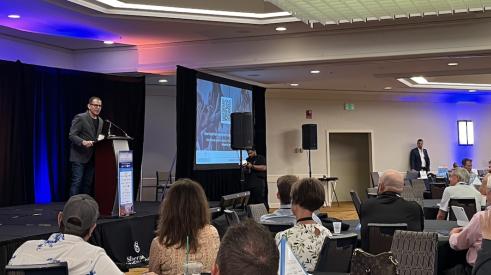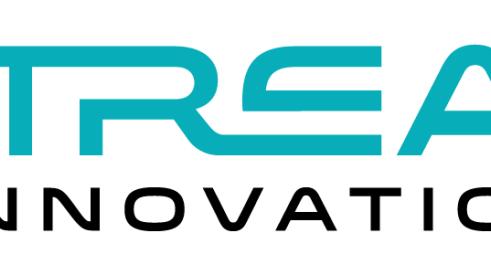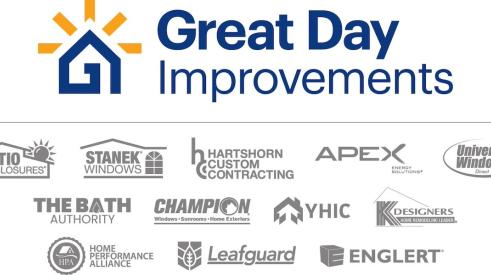Jim Woods, owner of Woods Roofing, in Canton, S.D., remembers when taking on “storm work”—repairing or replacing a roof after a major weather event—was something he avoided. On those occasions when he did take on storm work, he says he felt manipulated by insurance companies and had problems collecting payment. Woods stayed away for all of the reasons that many other companies do: His retail roofing business was not set up for it.
“You can quickly put yourself out of business by not managing the paperwork and money correctly,” says Scott Siegal, president of Maggio Roofing in Takoma Park, Md. After taking on his first storm in 1999, Siegal found that his company was owed “a little over a million dollars because we didn’t know what we were doing and we didn’t know the process.” He made it a point to learn.
Woods didn’t know much about the process either when about five years ago a series of hailstorms struck Canton, population 3,500, where he lives, damaging about half of the homes. More hail soon hit Sioux Falls, S.D., population 150,000, where he does most of his business. “I got 100-and-some roofs overnight,” Woods says. That left him with little choice but to figure out how to manage insurance work.
Storm vs. Retail
Companies that specialize in repair or replacement of roofs damaged by storms will tell you their business is not just replacing a roof, it’s managing the homeowner through the insurance claim and payment process. In some parts of the country—such as the South Central states—that’s all some roofing companies do, because there are that many storms.
“The roof is a huge part of [the insurance companies’] underwriting in this part of the country,” says Scott McCollum, owner of McRoof, in Oklahoma City. More than 95 percent of McCollum's work is insurance-related, and he says that replacing the roof on a house because it’s about to go on the market “is the closest thing to retail you’re going to get” in an area right in the heart of what’s sometimes dubbed Tornado Alley, and at other times The Hail Belt. And hail and tornadoes are only part of it—there are also the 100-plus mph wind storms that generate at least as much damage.
And damage is business: “We are storm restoration specialists,” McCollum says. His company has developed lots of processes over the years to make the storm work business flexible and efficient. That includes, in addition to technical competencies, chapter and verse knowledge of building codes, and on-staff licensed claims adjusters, appraisers, and certified roofing inspectors, things that McCollum says anyone who wants to get into storm restoration had better be know and have.
A retail roofing contractor tempted to do storm work faces a challenge, McCollum says, because he’s used to “having a salesman go out, measure, write an estimate, sign a contract, build the roof, and get paid. That’s not how our world works.”
How it works, he says, is that “we inspect a roof to see if there’s damage to justify filing a claim” and, assuming there is, “meet with an adjustor on that roof to make sure that we get that client compensated at market value for their sustained loss.”
After that? A ton of back-end paperwork to be managed, “arm wrestling over hidden scope” with adjusters, and the “constant struggle” for final payment. It is a business, McCollum says, “with a huge tail on it.” Replacing the roof just gets you started. The complications of insurance work make that occasional retail roof replacement seem easy, he says.
Weather’s New Normal
More roofing contractors may need to learn what Scott McCollum knows. This season’s mega-hurricanes, such as Harvey, which left much of Houston underwater, or Irma, which slashed and battered Florida, and Hurricane Maria, which left Puerto Rico in a shambles without power, will become, in the future, more and more the norm, thanks to warmer oceanic temperatures that spawn bigger, badder hurricanes.
But it’s not just the Gulf Coast that’s facing weather problems. Roofing and siding contractors in the Twin Cities this year have had all the work they can handle, thanks to a hailstorm that pounded that area on June 11. It’s been a bounty of work for Ted Swanson, president of Trinity Exteriors, in the Minneapolis suburb of St. Louis Park, which specializes in roofing restoration. Positioned at the edge of The Hail Belt rather than in the middle of it, Swanson can’t rely on inclement weather to provide enough insurance jobs. So in 2013 he developed a strategy to expand the retail roofing side of his business. The goal had been to balance storm and retail 50/50 to “round out the peaks and valleys of storm work,” he says. Last year, Trinity Exteriors was at 65 percent storm, 35 percent retail and moving to reach its strategic goal. Given all the work generated by June 11, sales this year will be 80 percent storm, 20 percent retail.
Roofing companies that specialize in storm work but want to grow by adding retail business, Swanson says, have the challenge of generating leads and selling to homeowners who are paying out of their own pockets instead of with insurance money. Swanson himself will not get back to the challenge of building his retail sales until the storm work is wrapped up. The storm has brought the company larger jobs because, unlike many roofing companies, Trinity also does siding, windows, and painting. “The homeowner doesn’t want to hire a roofer, a sider, and a window company,” he says. “They want someone who can do the whole thing.”
Emotion Be Gone
Storms can throw down a challenge to retail roofing companies on the periphery of The Hail Belt, because so many roofs need replacing at once that it becomes now or never. Woods, with 100-plus homeowners on the phone seeking his services, and multiple insurance company adjusters to deal with, called Certified Contractors Network (CCN), a contractor networking group he belongs to. What transpired next was a “crash course” in managing storm work via eight weeks of daily advice on the phone with Scott Siegal, owner and president of CCN.
Woods put together a process that enabled him to successfully manage the work. For one thing, he produced those estimates using Xactimate, a property claims software tool that is the industry standard. He says he also learned to “take the emotion out of it” when adjustors disputed line items in a bid. Claims adjusters are used to contractors who howl in protest over the insurer’s refusal to pay for this or that item, but then shut off the phone and do the work anyway. “You have to learn to negotiate, explain where you’re coming from, and to speak their language,” Woods says.
The effective response, he found, was to patiently explain via email why a particular item was needed. For example, if his proposal included installing a ridge vent, and the insurance company refused to pay on the grounds that the original roof had had no ridge vent, Woods would calmly point out—via email—that code now mandated adequate ventilation, including a ridge vent. Result? His complete bid and price is almost always ultimately approved.
Woods also mastered the payment process, which is longer and more complex than retail. One person in his office handles payments. “We get the invoice done immediately and send it in immediately,” Woods says, “and we make sure that it’s on someone’s desk who’s responsible for reviewing it.”
Getting the right price, getting the scope approved, and collecting, make insurance work profitable. As the weather becomes less stable in more parts of the country, it’s something other contractors might want to start looking into. “You can’t just do a whole bunch of work,” Woods says, “and wonder when the check’s coming in.”
Related Stories
What's Beyond the Hammer?
Working with Brian Gottlieb on the book Beyond the Hammer provided a masterclass on how to build an aligned team
5 Counterintuitive Strategies to Improve Your Business
Follow these strategies to inspire employees, instill trust, and beat the competition
Couple Act As Much More Than General Contractors
How LBR Partners uplifts and educates their Spanish-speaking trade partners
How to Correctly Hire for Business Growth
Refloor CEO Brian Elias shares exactly how his company hires the correct people for the correct seats
Power Home Remodeling Expands Financing Offshoot with $400M from Goldman Sachs
Industry-leading home improvement company Power plans to grow its fintech offshoot fivefold with new investment
· sponsored
Increase sales and grow your business with Momnt Contractor Financing
Give your clients simple, fast, and affordable payment options for the investments that matter most
Great Day Improvements Acquires LeafGuard and Englert
Leading home improvement company Great Day Improvements purchases two major brands from private equity firm Audax
Latest Private Equity Activity Signals Continued Strength in Home Improvement
A hot month for private equity means the industry remains opportunity-rich
Josh Sparks: To Infinity (Exteriors) and Beyond
A roofer-turned-CEO who’s succeeding in his mission of up-leveling the industry
The Top Customer Expectations Contractors Must Meet in 2024
Hint: There are two vital things customers today expect that they didn't always think about












